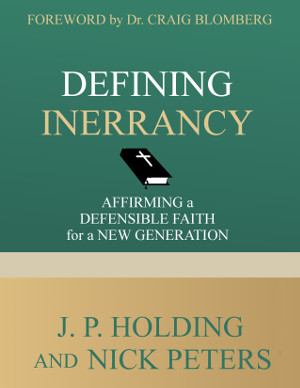Another factor for consideration in reckoning the harmonizing of Gospel records is a facet of the Eastern mindset that the precision-minded Western critic cannot comprehend. It will useful to quote extensively from Abraham Rihbany's The Syrian Christ [108ff]. Rihbany, a Syrian familiar with our culture, noted as follows:
There is much more of intellectual inaccuracy than of moral delinquency in the Easterner's speech. His misstatements are more often the result of indifference than the deliberate purpose to deceive. One of his besetting sins is his ma besay-il -- it does not matter. He sees no essential difference between nine o'clock and half after nine, or whether a conversation took place on the housetop or in the house. The main thing is to know the substance of what happened, with as many of the supporting details as can be conveniently remembered.
The implications of this should be clear. Gospel writers who differ on minor points such as times, number of angels at a tomb, exact locations, and so on, are signators to a semantic contract that Westerners haven't even read. Let's look at some related points that note this from a secular perspective.
Boyd and Eddy in The Jesus Legend note that sociologists aware of this phenomenon have referred to it as "relevant precision" and indeed quote a secular sociology periodical as saying much the same thing I do: That to insist on a greater level of precision that was intended for a context would be "sanctionable, pedantic, or intrusive." [433]
Similarly, Jocelyn Small in Wax Tablets of the Mind (5-7) further confirms and elucidates these points, which have special application to alleged problems in wording across the Gospels. As she puts it, "Exact wording is rarely crucial in oral societies, but often of great importance in literate ones, though this aspect took centuries to develop." As a result, "it is not the words but the story or the gist that counts." Gospel writers would not be expected to get the verba (exact words) of Jesus, but the vox (voice).
Furthermore, the need for most people to memorize material (since 90% were illiterate) meant that artistic structuring was sometimes used to aid the memory (118). This might sacrifice the precision that we moderns so value, but that is our problwm, not theirs.
In addition, a reader has noted the following which provides a loose parallel to the concept of ma besay-il and indifference to detail, from Chinese culture:
The title Three Hundred Tang Shi therefore tells us that this is an anthology of three hundred poems in the shi styles, all written during the Tang dynasty. The "three hundred" is approximate. Chinese people have, or at any rate in pre-modern times had, no very passionate attachment to numerical exactitude. (Another classic collection bears the title Nineteen Ancient Poems; it contains twenty-one.) The original edition of Three Hundred Tang Shi, compiled in the late eighteenth century by a scholar named Sun Zhu, included 310 poems. Later editors added or dropped poems at their whim, though the bulk of the collection remained unchanged. Bynner's The Jade Mountain contains translations of 294 poems.
Source: http://olimu.com/Journalism/Texts/Criticism/ChinesePoetry.htm
Would critics want to criticize the Chinese for their numeric imprecision and making a mistake?
See here for discussion of further objections.
-JPH

